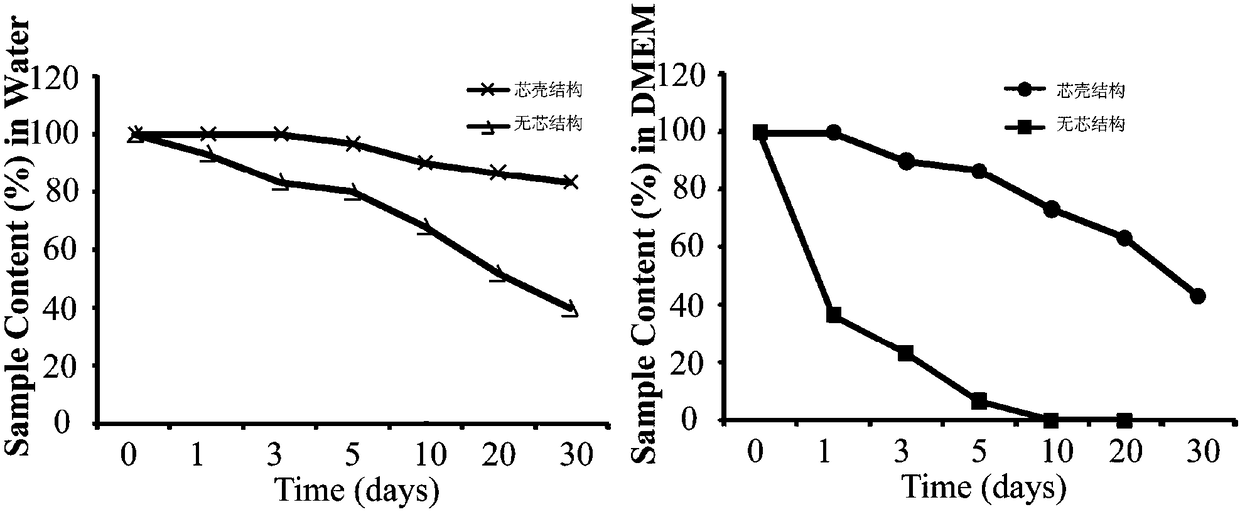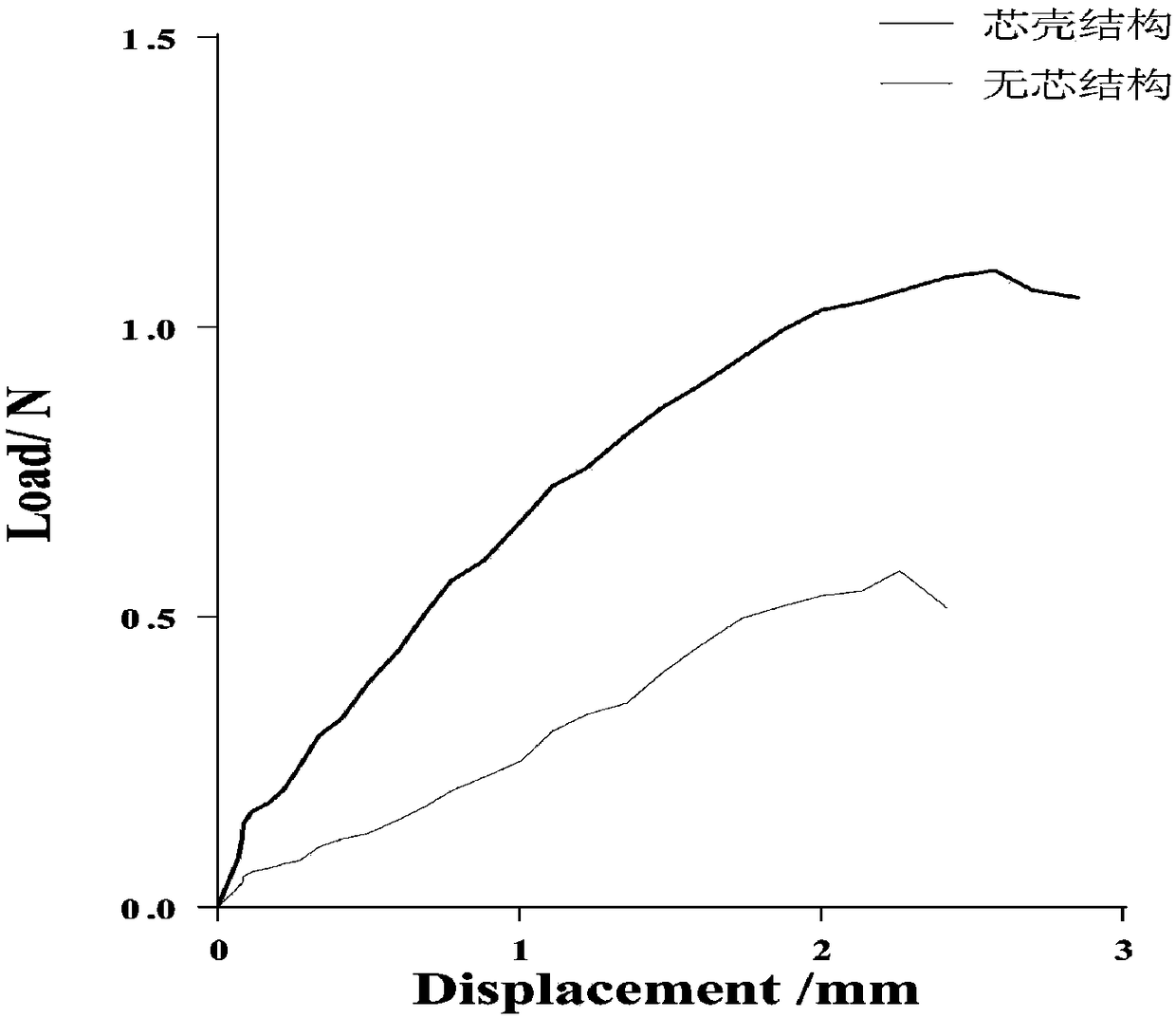Conductive tissue engineering scaffold as well as preparation method and application thereof
A tissue engineering scaffold and conductive technology, applied in the field of biomedical materials, can solve the problems of low conductivity, poor mechanical properties and poor stability of conductive composite materials, and achieve high porosity, long-term electroactivity and good stability Effect
- Summary
- Abstract
- Description
- Claims
- Application Information
AI Technical Summary
Problems solved by technology
Method used
Image
Examples
Embodiment 1
[0042] The selection and preparation method of embodiment 1 material
[0043] 1. Design of conductive fiber structure
[0044] 1. The preparation of the conductive fiber of the "shell-core" structure of the present invention
[0045] (1) Preparation of silkworm silk fibroin, desericin:
[0046] Weigh 50g of silkworm silk (including sericin), boil 2L of three-distilled water in an induction cooker, add 1g of anhydrous sodium carbonate after the water boils, put the weighed silkworm silk into the boiling water, and start timing when the water boils Keep the water boiling for 30 minutes, but pay attention to the overflow of boiling water, and stir it with a glass rod from time to time during the process. After the first pass of cooking, the silk is taken out of the water, washed in triple distilled water for 3-4 times, and then the above operation is repeated three times in total. After the last de-sericin removal, it is repeatedly eluted to neutrality with triple distilled wa...
PUM
 Login to view more
Login to view more Abstract
Description
Claims
Application Information
 Login to view more
Login to view more - R&D Engineer
- R&D Manager
- IP Professional
- Industry Leading Data Capabilities
- Powerful AI technology
- Patent DNA Extraction
Browse by: Latest US Patents, China's latest patents, Technical Efficacy Thesaurus, Application Domain, Technology Topic.
© 2024 PatSnap. All rights reserved.Legal|Privacy policy|Modern Slavery Act Transparency Statement|Sitemap


